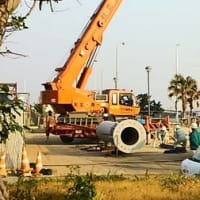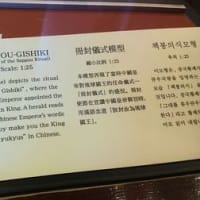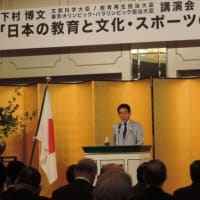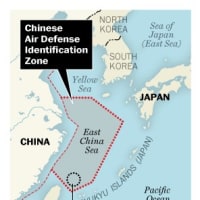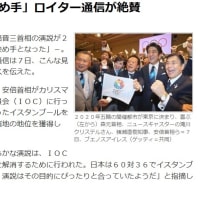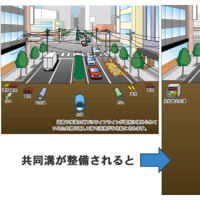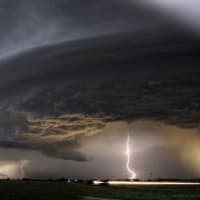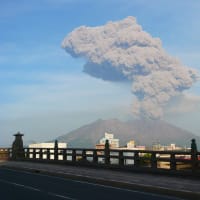とにかくこれから中国人の「食欲・物欲・●欲・・・」を満たすために、世界中から物資を中国に向かわせます。
海洋ルートも重要な補給路であり、自らの権益拡大のために、「自国へのコンテナ船警護」という名のもとに人民解放軍海軍が太平洋に侵出してくることはほぼ間違いありません。
日本政府は「迎え撃つ外交戦略」を持っているのか!
その本質がいま問われます。
ビジネスアイの時事英語(10月25日)より抜粋
http://eigo.iza.ne.jp/blog
英文)
Container lines struggling to make money hauling Chinese-made goods to the U.S. are experiencing a surge in lucrative shipments of meat, fruits and vegetables in the other direction.
A.P. Moeller-Maersk A/S and Neptune Orient Lines Ltd.’s APL unit have led a 46 percent jump in refrigerated-container shipments to China from the U.S. this year, according to Piers data, as higher wages and quality concerns stoke demand for imported food. The need for specialized containers, known as reefers, means rates are about four times higher than those for carrying a standard box from Shanghai to Los Angeles.
Shipping lines use refrigeration equipment and gases including oxygen, carbon dioxide and nitrogen to keep food fresh during sea voyages that can be longer than two weeks.
That’s allowing them to carry goods that once could only be moved by quicker and more costly air cargo. APL, Orient Overseas (International) Ltd. and other lines also offer real-time temperature tracking-systems to assure shippers about quality.
Shanghai Great Harvest International Co., which distributes fruit across China, pays about $6,000 to ship a forty-foot container of cherries from Seattle to Hong Kong, said Chief Executive Officer John Wang. Cherries are the fastest-growing product in terms of demand for the wholesaler, which also imports grapes, apples and other fruits, he said.
“There’s an opportunity in the reefer market,” said Tim Smith, the North Asia head at Maersk Line, the world’s largest container-ship operator.
Copenhagen-based Maersk’s shipping arm plans to invest more than $1 billion in refrigerated containers over two years, Smith said by e-mail.
Revenue from chilled cargo may rise more than 10 percent next year after “major” growth this year, he said.
訳文)
中国産製品の米国向けコンテナ輸送が利益をあげにくくなる一方で、米国産の食肉や果物、野菜の中国向け輸送は急増している。
ピアーズのデータによると、デンマークのAPモラー・マースクやシンガポールのネプチューン・オリエント・ラインズ傘下のAPLなどを中心に米国から中国向けの冷凍コンテナ輸送が今年に入って46%増加している。中国国内での賃金上昇と品質への関心の高まりを背景に、輸入食料の需要が拡大しているためだ。特殊に設計された冷凍貨物船の需要増により、用船レートは上海-ロサンゼルス間の通常レートの約4倍に高騰している。
海運各社は、2週間以上を要する海上輸送の期間中、冷凍設備のほか酸素や二酸化炭素、窒素などのガスを利用して食品の鮮度を保つ。これにより、以前は輸送期間が短くコストが高い空輸のみだった食品の海上輸送が可能になった。APLや東方海外国際(オリエント・オーバーシーズ)などの海運会社は荷主に貨物の品質を保証するため、リアルタイムの温度追跡システムも導入している。
中国全土で果物の卸売を手掛ける上海グレート・ハーベスト・インターナショナルのジョン・ワン最高経営責任者(CEO)によると、同社は40フィート型コンテナ1個当たり約6000ドルをかけてシアトルから香港にアメリカンチェリーを輸送している。同社はブドウやリンゴなどの果物も輸入しているが、アメリカンチェリーの需要が最も伸びているという。
世界最大のコンテナ海運会社マースク・ラインの北米担当責任者、ティム・スミス氏は「冷凍貨物船海運市場では商機がある」と指摘。電子メールでの取材に応じ、同社が冷凍コンテナ向けに今後2年間で10億ドル(約770億円)以上の投資を計画していると語った。また今年の「大幅な」伸びを受け、冷凍貨物輸送の収入は来年10%以上増加する見通しだと述べた。
海洋ルートも重要な補給路であり、自らの権益拡大のために、「自国へのコンテナ船警護」という名のもとに人民解放軍海軍が太平洋に侵出してくることはほぼ間違いありません。
日本政府は「迎え撃つ外交戦略」を持っているのか!
その本質がいま問われます。
ビジネスアイの時事英語(10月25日)より抜粋
http://eigo.iza.ne.jp/blog
英文)
Container lines struggling to make money hauling Chinese-made goods to the U.S. are experiencing a surge in lucrative shipments of meat, fruits and vegetables in the other direction.
A.P. Moeller-Maersk A/S and Neptune Orient Lines Ltd.’s APL unit have led a 46 percent jump in refrigerated-container shipments to China from the U.S. this year, according to Piers data, as higher wages and quality concerns stoke demand for imported food. The need for specialized containers, known as reefers, means rates are about four times higher than those for carrying a standard box from Shanghai to Los Angeles.
Shipping lines use refrigeration equipment and gases including oxygen, carbon dioxide and nitrogen to keep food fresh during sea voyages that can be longer than two weeks.
That’s allowing them to carry goods that once could only be moved by quicker and more costly air cargo. APL, Orient Overseas (International) Ltd. and other lines also offer real-time temperature tracking-systems to assure shippers about quality.
Shanghai Great Harvest International Co., which distributes fruit across China, pays about $6,000 to ship a forty-foot container of cherries from Seattle to Hong Kong, said Chief Executive Officer John Wang. Cherries are the fastest-growing product in terms of demand for the wholesaler, which also imports grapes, apples and other fruits, he said.
“There’s an opportunity in the reefer market,” said Tim Smith, the North Asia head at Maersk Line, the world’s largest container-ship operator.
Copenhagen-based Maersk’s shipping arm plans to invest more than $1 billion in refrigerated containers over two years, Smith said by e-mail.
Revenue from chilled cargo may rise more than 10 percent next year after “major” growth this year, he said.
訳文)
中国産製品の米国向けコンテナ輸送が利益をあげにくくなる一方で、米国産の食肉や果物、野菜の中国向け輸送は急増している。
ピアーズのデータによると、デンマークのAPモラー・マースクやシンガポールのネプチューン・オリエント・ラインズ傘下のAPLなどを中心に米国から中国向けの冷凍コンテナ輸送が今年に入って46%増加している。中国国内での賃金上昇と品質への関心の高まりを背景に、輸入食料の需要が拡大しているためだ。特殊に設計された冷凍貨物船の需要増により、用船レートは上海-ロサンゼルス間の通常レートの約4倍に高騰している。
海運各社は、2週間以上を要する海上輸送の期間中、冷凍設備のほか酸素や二酸化炭素、窒素などのガスを利用して食品の鮮度を保つ。これにより、以前は輸送期間が短くコストが高い空輸のみだった食品の海上輸送が可能になった。APLや東方海外国際(オリエント・オーバーシーズ)などの海運会社は荷主に貨物の品質を保証するため、リアルタイムの温度追跡システムも導入している。
中国全土で果物の卸売を手掛ける上海グレート・ハーベスト・インターナショナルのジョン・ワン最高経営責任者(CEO)によると、同社は40フィート型コンテナ1個当たり約6000ドルをかけてシアトルから香港にアメリカンチェリーを輸送している。同社はブドウやリンゴなどの果物も輸入しているが、アメリカンチェリーの需要が最も伸びているという。
世界最大のコンテナ海運会社マースク・ラインの北米担当責任者、ティム・スミス氏は「冷凍貨物船海運市場では商機がある」と指摘。電子メールでの取材に応じ、同社が冷凍コンテナ向けに今後2年間で10億ドル(約770億円)以上の投資を計画していると語った。また今年の「大幅な」伸びを受け、冷凍貨物輸送の収入は来年10%以上増加する見通しだと述べた。










